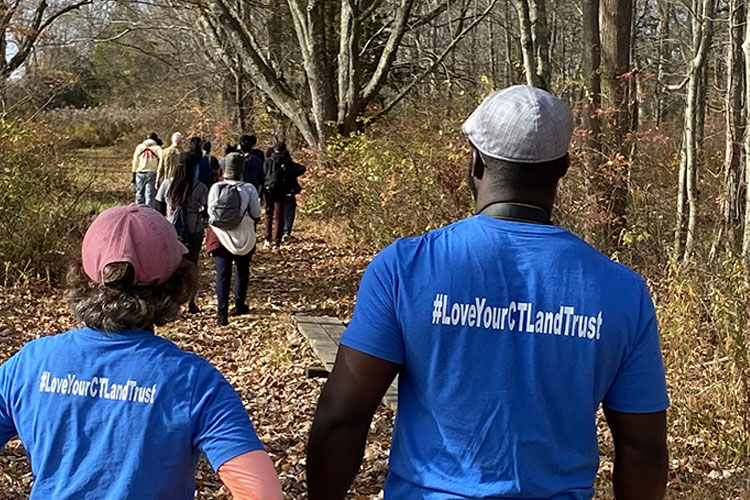The following resources have been provided by presenters from the Connecticut Land Conservation Conference.
Interested in presenting at a future conference? Requests for presentations are currently closed, however, contact Amy B. Paterson at abpaterson@ctconservation.org for more info.
Previous Conference Resources
CIRCA has published a new factsheet on the important role Conservation Commissions have integrating climate change resilience into local decision-making processes.
This resource from the Land Trust Alliance was provided by Robert Beach (Joshua’s Trust) and Ailla Wasstrom-Evans (Land Trust Alliance) at the 2023 Connecticut Land Conservation Conference. Their workshop How Stewardship and Enforcement Inform Transactions focused on transactional considerations informed by local and national trends in easement interpretation and enforcement.
The USDA Forest Service created this guide that includes an Adaptation Workbook process to help land trusts navigate the effects of climate change.
A 2022 report from Highstead explores how New England’s forests are an important climate solution and explores five pathways to increase forests’ impact.
The Northeast Bird Habitat Conservation Initiative has announced the launch of an exciting new interactive mapping tool designed to aid northeastern conservation practitioners and organizations, including regional conservation partnerships and land trusts in advancing conservation.
Shared by Sharon Danosky, this alternative way of structuring board meetings allows you to focus discussion on “big picture” items, and connect the discussions in your meeting back to your mission and strategic objectives. Also included are ideas for creating a consent agenda to more efficiently move through items that may require approval, but do not require discussion.
CLCC and CT Farmland Trust hosted an online introduction to the FarmLink program, and how FarmLink can help match your land trust to a farmer who is interested in stewarding your agricultural lands. Topics discussed land and community benefits of leasing farmland, land trust considerations before leasing, and funding opportunities for your land trust.
This handbook was produced for New England by the Non-farming Landowner Task Force of the Land Access Project.
